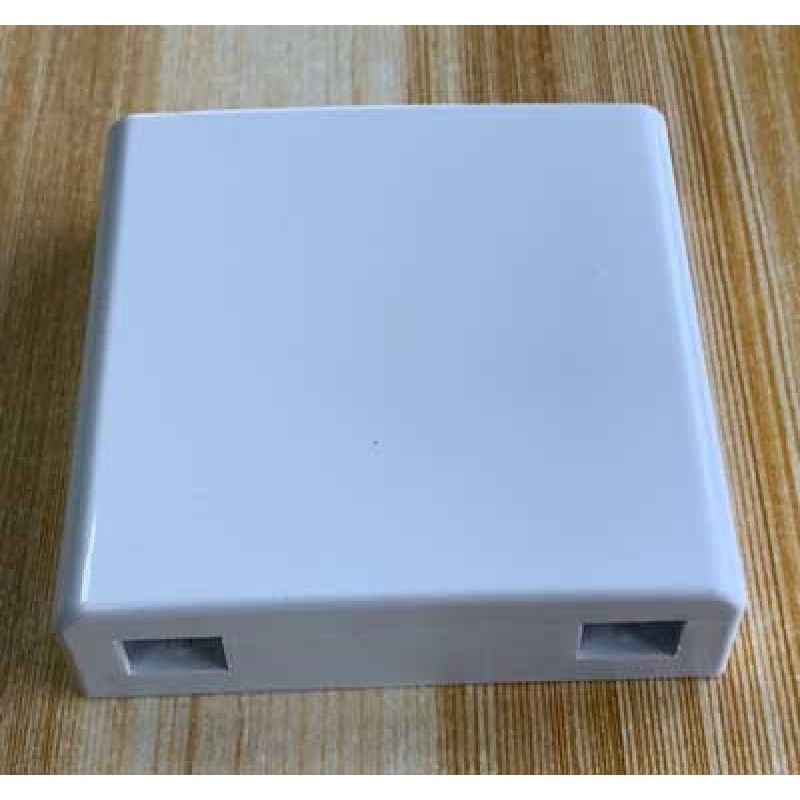
Access Terminal Box
Understanding the Access Terminal Box: The Backbone of Fiber Optic Networks
In the world of fiber optic networks, managing and protecting cables is crucial for ensuring efficient data transmission and minimizing maintenance costs. One essential component that plays a vital role in this process is the Access Terminal Box. Also known as a fiber optic terminal box or distribution box, this device serves as a central point where fiber optic cables are connected, organized, and protected. In this blog, we will dive into what an access terminal box is, its functions, types, and why it’s essential in modern fiber optic installations.
What is an Access Terminal Box?
An Access Terminal Box is a protective enclosure used in fiber optic networks to house and organize fiber optic cables and splices. Its primary function is to provide a secure and organized space where fiber optic cables can be terminated, spliced, or distributed to different areas of a network. These boxes are typically installed at key points within a fiber optic network—whether in buildings, outdoor cabinets, or in the field—to ensure efficient cable management and protection.
These boxes come in various designs and sizes, depending on the number of fibers, the complexity of the network, and environmental factors.
Functions of an Access Terminal Box
The Access Terminal Box plays several important roles in the maintenance and operation of a fiber optic network:
-
Cable Termination: The access terminal box allows for the safe and secure termination of fiber optic cables. In simple terms, it is where fiber optic cables are connected to other components in the network, such as switches, routers, or other fibers.
-
Splicing: Fiber optic cables often need to be spliced together when longer connections are required. The terminal box provides a controlled environment for performing fusion splicing, where the individual fibers are joined to maintain signal integrity.
-
Cable Management: These boxes are equipped with features that help manage and organize cables effectively. By keeping fibers organized and protected from physical damage, access terminal boxes prevent cable tangling, minimize signal loss, and allow for easy identification during troubleshooting.
-
Protection: Protecting the fiber optic network from environmental factors such as moisture, dust, and physical impact is critical for maintaining optimal network performance. Access terminal boxes are designed to shield fiber optic cables from external damage and contaminants, ensuring that the network stays functional and reliable.
-
Easy Access for Maintenance: The design of access terminal boxes typically includes removable panels, lids, or doors that make it easy for technicians to access the cables and perform maintenance tasks such as reconfiguring the network, adding new connections, or checking for damage
Key Features to Look for in an Access Terminal Box
When selecting an access terminal box for a fiber optic network, several key features should be considered:
-
Capacity: The box should be able to accommodate the number of fibers you plan to work with, including the potential for future expansion. It’s important to choose a box with enough space to handle cable routing and splicing without overcrowding.
-
Material and Durability: Access terminal boxes are available in materials like ABS (Acrylonitrile Butadiene Styrene), steel, or aluminum. For outdoor installations, ensure that the box is made from weather-resistant materials that can withstand environmental conditions like rain, heat, and humidity.
-
Ease of Access: The design should allow for easy installation, maintenance, and reconfiguration of the fiber connections. Removable covers, cable entry points, and space for storing excess cable length are all important considerations.
-
Protection: Look for a box that offers adequate protection from dust, moisture, and physical damage. Many terminal boxes come with IP (Ingress Protection) ratings that indicate their level of protection against environmental factors.
-
Cable Management Features: A good terminal box should provide cable management solutions such as cable trays, hooks, and fiber splicing trays to ensure cables are neatly organized and protected during installation and use.
Why Is the Access Terminal Box Important?
-
Improved Network Efficiency: By organizing and securing fiber optic cables, the access terminal box helps maintain the integrity and performance of the network. It ensures that fiber connections are properly terminated, minimizing signal loss and improving overall network efficiency.
-
Easier Troubleshooting: If a problem arises in the network, an access terminal box provides technicians with quick access to the cables for troubleshooting. Clear labeling, organized splicing trays, and proper cable management reduce the time it takes to identify and fix issues.
-
Scalability: As fiber optic networks continue to expand, access terminal boxes make it easier to add new connections or upgrade existing ones. The modular design of many boxes allows for the addition of more ports or fibers as needed, helping to future-proof the network.
-
Protection Against External Damage: Access terminal boxes provide a shield against environmental hazards that could damage fiber optic cables. Whether installed indoors or outdoors, these boxes ensure that cables remain intact and protected, preventing costly repairs or service interruptions.
In the world of fiber optic networks, an Access Terminal Box is an indispensable tool for cable management, protection, and network organization. By providing a secure and accessible environment for cable termination and splicing, these boxes play a crucial role in the long-term health and efficiency of the network. Whether you’re setting up a small-scale installation or managing a large fiber optic deployment, understanding the importance of the access terminal box and selecting the right one for your needs can save you time, effort, and resources down the line.
An Access Terminal Box (ATB) is typically used with a variety of other accessories to ensure optimal performance and organization of fiber optic networks. These accessories help with fiber cable management, protection, and ease of maintenance. Below are some of the key accessories commonly used with Access Terminal Boxes:
1. Fiber Splicing Trays
Fiber splicing trays are essential for organizing and protecting fibers that have been spliced. Inside the ATB, splicing trays help keep the fibers in place and secure while allowing for easy access during maintenance or upgrades. These trays ensure that fiber optic cables are properly aligned and protected from damage.
2. Cable Management Clips and Holders
Cable management clips or holders are used to neatly organize and secure fiber optic cables within the Access Terminal Box. These clips prevent cables from tangling, reducing the risk of damage while improving airflow and ease of access.
3. Patch Cords and Pigtails
- Patch cords: These are used to connect the fibers within the terminal box to other network components, such as switches or routers.
- Pigtails: These are short fiber optic cables with connectors that are used for splicing onto the fibers inside the terminal box. Pigtails make it easier to make connections to various fibers within the network.
4. Fiber Optic Adapters
Fiber optic adapters are used to connect and align different types of fiber optic cables within the Access Terminal Box. These adapters can connect fiber optic patch cords, pigtails, or other fiber cables to the distribution points, ensuring compatibility across the network.
As fiber optic technology continues to evolve, the access terminal box remains a foundational component of reliable, high-performance networks.
99
0
746
172

